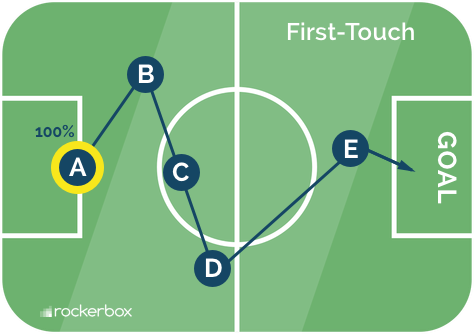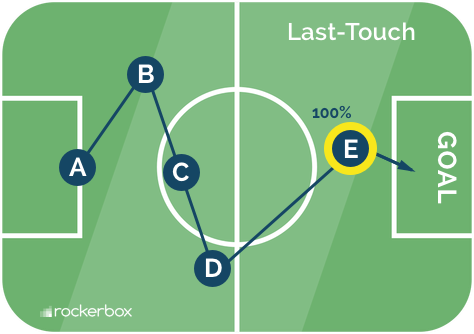Single-touch attribution is a method of digital marketing analytics that assigns credit for conversions to a single marketing channel or touchpoint. It is used to identify which marketing channels are leading to conversions and to optimize campaigns accordingly. Single-touch attribution is useful for understanding the effectiveness of individual marketing channels and campaigns.
There are several different types of single-touch attribution models, each of which assigns credit differently. The most common types are Last Touch, First Touch,, and Last Non-Direct Touch models.
Last Touch Attribution
The Last Click model assigns 100% of the credit for a conversion to the last marketing channel that was interacted with prior to the conversion. This model is easy to understand and implement, but it can be misleading because it ignores the impact of other channels leading up to the conversion. For example, the last click may have received all the credit, despite the fact that previous marketing efforts, such as brand awareness campaigns, may have been responsible for the conversion.
First Touch Attribution
The First Click model assigns 100% of the credit for a conversion to the first marketing channel that was interacted with prior to the conversion. This model is useful for understanding which channels are responsible for driving initial interest in a product or service. However, this model often overlooks the influence of other channels that may have contributed to the conversion.
In the soccer game figure below, we’d give all the credit to Player A. If you’re mainly focused on widening top of your funnel, this is a useful model. It highlights the channels that first introduced a customer to your brand. The problem? It ignores all subsequent touches, and therefore provides no insight into your down-funnel metrics. A Facebook ad may send you a lot of website traffic, but probably isn’t the sole influencer in a conversion.

Last Non-Direct Touch Attribution
The Last Non-Direct Click model assigns 100% of the credit for a conversion to the last non-direct marketing channel that was interacted with prior to the conversion. This model is useful for understanding the impact of non-direct marketing channels and for attributing credit more fairly. However, this model can be difficult to implement and may not accurately reflect the impact of each channel on the conversion.
This model would give all the credit to the striker (Player E in the image below). You could argue that the last touch is all that matters because it resulted in the actual conversion, but it doesn’t tell the whole story. Your customers are likely engaging with your brand across multiple touchpoints on various channels before they convert.

These are the most common types of single-touch attribution models. Each model has its own strengths and weaknesses, and it is important to understand which model is best suited for your particular situation. It is also important to use multiple attribution models in order to get a better understanding of how different channels are influencing conversions.
 Google
Google Facebook
Facebook Instagram
Instagram TikTok
TikTok Snapchat
Snapchat Reddit
Reddit Pinterest
Pinterest


.png?width=50&height=56&name=medal%20(1).png)



